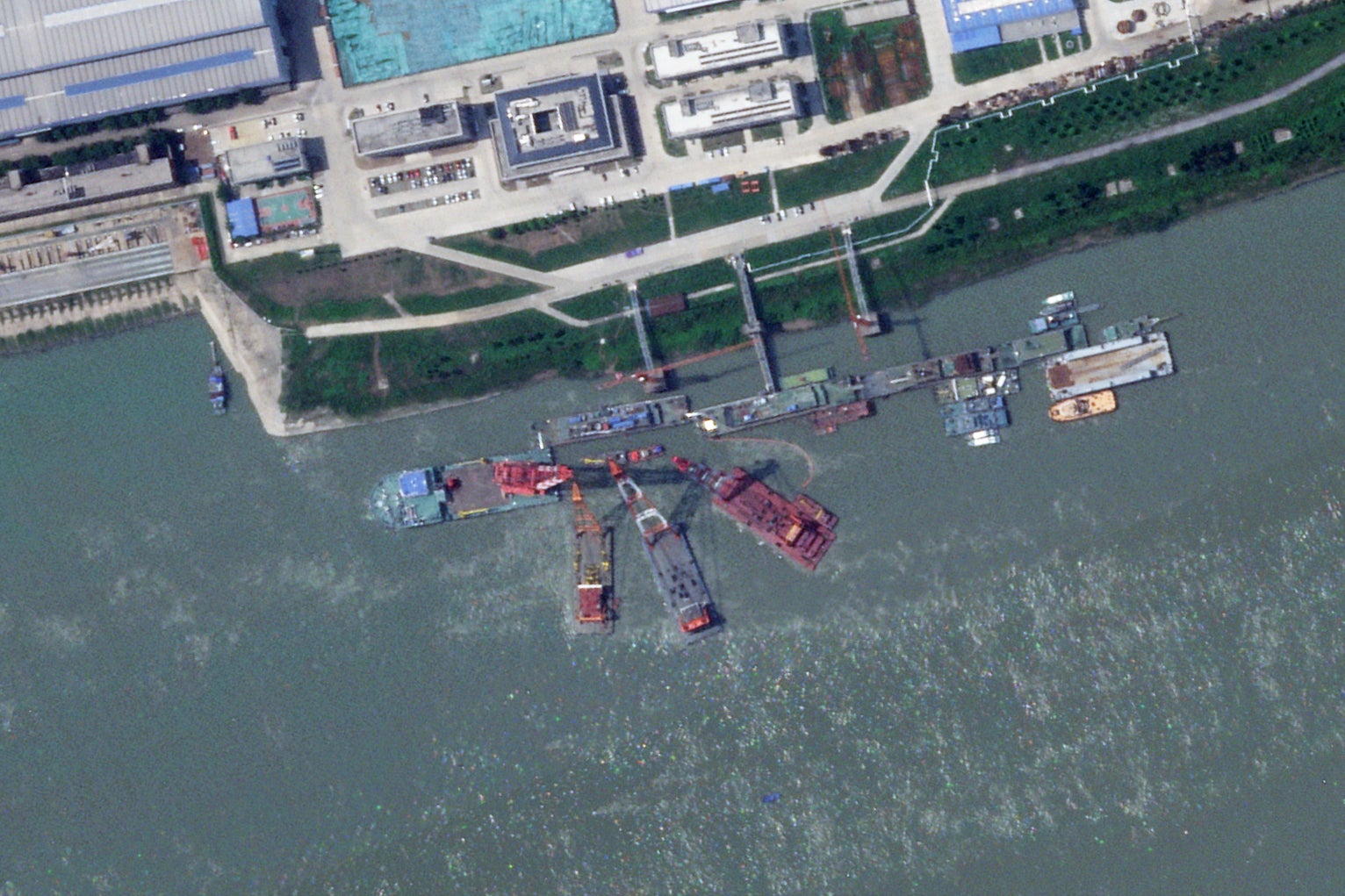New Chinese nuclear attack submarine sank during construction, US defense official says
A senior U.S. defense official says satellite imagery shows that China's newest nuclear submarine sank while under construction

Your support helps us to tell the story
From reproductive rights to climate change to Big Tech, The Independent is on the ground when the story is developing. Whether it's investigating the financials of Elon Musk's pro-Trump PAC or producing our latest documentary, 'The A Word', which shines a light on the American women fighting for reproductive rights, we know how important it is to parse out the facts from the messaging.
At such a critical moment in US history, we need reporters on the ground. Your donation allows us to keep sending journalists to speak to both sides of the story.
The Independent is trusted by Americans across the entire political spectrum. And unlike many other quality news outlets, we choose not to lock Americans out of our reporting and analysis with paywalls. We believe quality journalism should be available to everyone, paid for by those who can afford it.
Your support makes all the difference.Satellite imagery showed that China’s newest nuclear-powered attack submarine sank alongside a pier while under construction, a senior U.S. defense official said Thursday.
The sinking of China's first Zhou-class submarine represents a setback for Beijing as it continues to build out the world's largest navy. Beijing has become increasingly assertive in pursuing its claim to virtually the entire South China Sea, which is crucial to international trade.
Meanwhile, China faces other longtime territorial disputes involve countries including Brunei, Malaysia, the Phillippines, Taiwan and Vietnam. The United States has sought to strength ties to its allies in the region and regularly sails through those waters in operations it says maintains the freedom of navigation for vessels there, angering Beijing.
The submarine likely sank between May and June, when satellite images showed cranes that would be necessary to lift it off the bottom of the river, said the official, who spoke on the condition of anonymity to provide details about the submarine loss.
China has been building up its naval fleet at a breakneck pace, and the U.S. considers China’s rise one of its main future security concerns.
The Chinese Embassy in Washington on Thursday said it was “not familiar with the situation” and it did not have information to provide.
The U.S. official said it was “not surprising” that China's navy would conceal it. The submarine's current status is unknown.
The identification of the sunken nuclear submarine was first reported by The Wall Street Journal. Thomas Shugart, a former U.S. Navy submariner and an analyst at the Center for a New American Security, first noticed the incident involving the submarine in July, though it wasn’t publicly known at the time that it involved the new Zhou-class vessel.
Satellite images from Planet Labs PBC analyzed by The Associated Press show what appears to be a submarine docked at the Shuangliu shipyard on the Yangtze River before the incident.
An image taken June 15 appears to show the submarine either fully or partially submerged just under the river’s surface, with rescue equipment and cranes surrounding it. Booms surround it to prevent any oil or other leaks from the vessel.
A satellite image taken Aug. 25 shows a submarine back at the same dock as the submerged vessel. It's not clear if it was the same one.
It remains unclear if the affected submarine had been loaded with nuclear fuel or if its reactor was operating at the time of the incident. However, there has been no reported release of radiation in the area in the time since.
China as of last year operated six nuclear-powered ballistic missile submarines, six nuclear-powered attack submarines and 48 diesel-powered attack submarines, according to a U.S. military report.
News of the submarine's sinking comes as China this week conducted a rare launch of an intercontinental ballistic missile into international waters in the Pacific Ocean. Experts say it marked the first time Beijing had conducted such a test since 1980.
___
Gambrell reported from Dubai, United Arab Emirates.